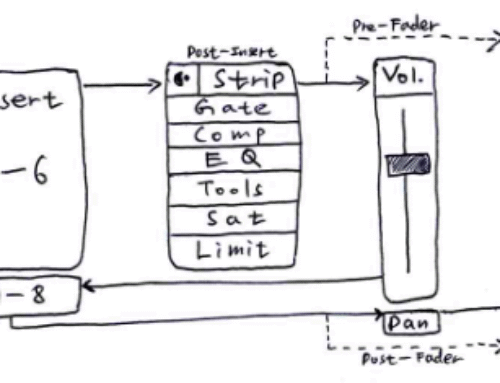| Recent Comments |
| Categories |
| Archives |
| Tags |
19-inch (11)
acoustics (7)
audio (18)
audio technology (25)
bands (17)
bas van kampen (11)
Behringer (8)
book (27)
compositions (14)
computer (8)
Configuration (9)
cubase (28)
daw (27)
daw controller (8)
decibels (9)
diary (62)
education (23)
guitar (10)
hammond (9)
hardware (43)
headphone (12)
keyboards (13)
kontakt (8)
mastering (34)
mix (18)
mixing (44)
monitoring (16)
native instruments (7)
orchestral (16)
outboard (13)
plugin (21)
pop (23)
recording (11)
skippy studio (9)
software (15)
soul (10)
sound (9)
sound education nederland (25)
sound intensity (7)
sound pressure (8)
steinberg (22)
studio (69)
synthesizer (16)
various (7)
video (31)
Cubase Tips
On this page I have a list of some less known Cubase features. I will gradually update this post, thus keep an eye on it.
- Key editor
- Chords. In the Key Editor you can select Chord Type and, subsequently, draw in a single note that will automatically be expanded to a chord. Using the Alt and Cursor Up/Down will adjust to the different chord types.
- Select specific notes. Ctrl-Click on the keyboard to select all notes (also works in the drum editor).
- Project window
- Cursor. In Edit > Preferences > Transport > Locate when Clicked in Empty Space. This will set the cursor at the position you click.
- Event Name. Shift-Enter to copy the Track name to the Event name.
- Solo follows track. In Edit > Preferences > Editing > Project & MixConsole > Enable Solo on Selected Track. If you solo a track and then select another track, the new track will be soloed instead. Very convenient for AB comparisons. Add a key command to switch this behavior on and off.
- Toggle time display. Use a dot (.) to toggle time display between bars/beats and seconds.
- Other
- Audio Pool vs Library. The audio pool contains all the audio events used in a project. These can be export as a library. In File -> Open Library you can open this again to select specific audio clips to be used in your new project.
- Supervision. Double click on meter to get full window meter.
- Track archive. A set of tracks (including Group and FX tracks/routing) can be Exported to a track archive. In contrast Track Presets do not preserve the routing.
- Mid/Side solo. As far as I know it is not possible in Cubase (unlike WaveLab) to audition the Mid and Side channels. I use the free bx_solo (brainworx) plugin for this.
- Starting a song at bar 2 (or later). It might be convenient to set the timecode at zero at the start of the song (Project > Set timecode at cursor). In addition, in Project > Project Setup set the ‘duration of the song’. Then, when zooming out to the max, the song nicely fits the project window.
- Detect Silence. This allows you to detect and remove silent sections of your multitracks (Audio > Advanced > Detect Silence). Very useful to get an overview of a song.
- Also useful
- If you own Cubase Pro but want to start another Cubase version (eg, Artist, Elements)? Start Cubase and hold the Alt key until you get a popup to choose a specific version.
- Setup a Cubase project to test your plugins. I included tracks (e.g., drums, vocal, guitar, piano, etc) from different songs. Also included several complete mixes, and some commercial reference tracks. Now I can easily play with specific plugins (e.g., compressors) and determine how they work with different tracks.
More useful stuff
- Skippy Studio
- Greg Ondo (Steinberg)
- Dom Sigalas
- Anthony Chisnall
- Lanewood Studios
- Communities
- CubaseINDEX.com is a huge Search INDEX for Steinberg’s Cubase DAW to search in all videos Q&A Hangout.
- Cubase communities can also be found on Discord (e.g., Cubase Nation, Cubase).
- Steinberg
- Other





